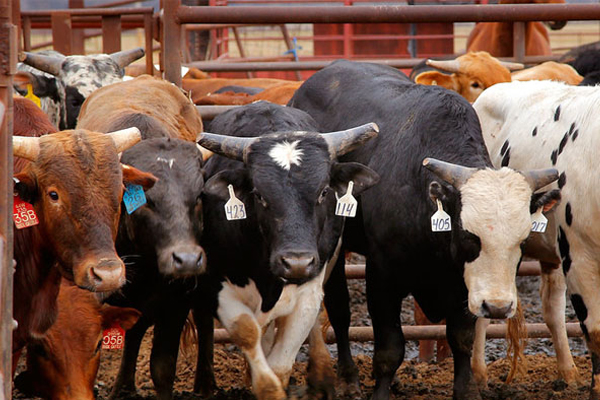Leather and Hide Council of America Traceability Program
Overview
The LHCA Traceability Program is a voluntary certification program that provides independently certified traceability for all USA hides and skins back to a single, identifiable point of origin. The purpose of the program is to provide trust, transparency and supply chain security to the global leather industry, including tanners, manufacturers, brands, retailers and consumers.
How It Works
LHCA has contracted with the U.S. Department of Agriculture’s Agricultural Market Service (AMS) to conduct independent audits to certify the origin of U.S. hides and skins to a single, identifiable facility– a specific meat packing plant or a hide/skin processing facility. All hides and skins produced in the U.S. are eligible to be certified under the program. AMS auditors will confirm, via physical onsite inspection, that a U.S. supplier has adequate procedures, internal controls and record keeping methods in place to ensure the hides and skins it sells originate from a single, identifiable facility of origin.
Once a facility has been certified to meet one of the traceability standards under the program, USDA AMS will list the name, contact information and program certification of the facility on a public AMS website. In addition, LHCA will list the facility, program certification and specific product information on its website with the contact information of the U.S. supplier.
Buyers of certified traceable hides and skins under the program are eligible to receive a Certificate of Origin identifying the facility where the product originated and accreditation information, as listed on the public USDA AMS website. The Certificate of Origin for specific loads of hides and skins that have been further processed into leather may be transferred to downstream customers such as manufacturers, brands and retailers, to help comply with supply chain transparency and security efforts.
About USDA AMS
AMS is the USDA’s primary certification agency for a large number of agricultural grading, marketing, and process verification programs. The agency has over 600 field inspectors stationed across the USA, primarily in regions with large agricultural industry presence. More information about AMS and its programs are available here: https://www.ams.usda.gov/.
The role of AMS in the program is to add external, third party validation of the program auditing protocols, allowing customers of the U.S. hides and skins industry, including manufacturers, brands, and retailers, to make substantiated and verifiable claims about their leather supply chain transparency.
Three Traceability Certification Protocols
There are three traceability certification protocols in place under the program that can certify the origin of U.S. hides or skins to a single, identifiable location. Suppliers may apply for one of the three traceability protocols under the program based on their own business models and internal processing procedures.
Meat Packing House Protocol
- Hides and skins certified under the Meat Packing House Protocol are traceable back to a single, identifiable slaughter house, abattoir or meat packing plant of origin where the live animal was processed.
- USDA AMS inspectors will confirm via onsite inspection that all hides or skins produced or processed at the facility originate from an onsite meat packing plant or associated slaughtering facility. No hides or skins are mixed, received or processed from any other source at the facility.
- Throughout processing, loading and shipping phases of production, the inspectors will confirm the product retains adequate means of identification which is traceable to the identified packing house.
Processing House Protocol
- Hides and skins certified under the Processing House Protocol are traceable back to a single, identifiable central processing facility, which may have collected or received hides and skins from multiple slaughter houses, abattoirs and other companies in a local geographical area. Hides and skins collected from these sources will be combined during processing and shipping phases of production.
- USDA AMS inspectors will confirm via onsite inspection that all collected or received hides or skins are processed at the identified facility. Processing may include including fleshing, trimming, curing, tanning or other activities which prepare the hide or skin for further processing and utilization.
- Throughout the processing, loading and shipping phases, the inspectors will confirm the products retains adequate means of identification which is traceable to the originating processing house.
Hybrid Protocol - Processors That Potentially Meet Both Standards
- For Hide or Skin Processing Houses that produce multiple product lines that might meet either or both of the above protocols, that facility may apply for the “Hybrid Protocol” which allows for some of their product lines to be certified as traceable back to the Meat Packing House, while other product lines are traceable to the Processing House.
- Individual hide or skin product lines or selections will be readily identifiable and verified by AMS as either traceable to the Meat Packing House or Processing House Protocol under this program. Customers will be readily informed, via the Certificate of Origin, as to whether the product they purchase is traceable to a specific meat packer or processor facility of origin.
Example: If 100% of the beef steer hides handled by a processing facility originate from a single meat packer or abattoir, but the dairy cow hides processed by the same facility originate from 2 or more separate meat packers and are mixed during processing the facility may choose the Hybrid Protocol. The steer hides would potentially be eligible to be certified as traceable to the Meat Packing House Protocol since they originate from a single facility, but the dairy cow hides would be eligible for the Processing House Protocol since they were mixed during production. - Under the Hybrid Protocol, USDA AMS inspectors will inspect and verify that the certified facility has adequate identification, procedures, internal controls and record keeping methods in place to ensure the origin of the individual product line claims.
For more information about the USDA AMS auditing procedures, please see the following document
Application Process
For U.S. hides and skins supplier companies interested in applying for the program, please contact LHCA for an application package.
We are sorry, but at this time the program is limited to facilities with a physical presence in the U.S.
LHCA Hide and Skin Traceability Program Certified Facilities List
| Operation | Marketing Claim | Products | Verification Information |
|---|---|---|---|
| Harland M. Braun & Co. 4010 Whiteside Street Los Angeles, CA 90063 Contact: Gene Beenders, VP Operations Phone: 323-263-9275 Email: Gene@braunexp.com |
|
Livestock: Bovine (Beef) for hides | Verified by: Livestock and Poultry Program Quality Assessment Division Approval No: VO0058BGA Effective Date: February 27, 2020 Extension Date: June 30, 2022 |
| Twin City Hide, Inc. 491 Malden Street South St. Paul, MN 55075 Contact: Bradley Grove, VP Operations Phone: 651-455-1511 Email: b.grove@tchide.com |
|
Livestock: Bovine (Beef and Bison) for hides Location(s): Processing facility - Twin City Hide, Inc. 491 Malden Street South St. Paul, MN |
Verified by: Livestock and Poultry Program Quality Assessment Division Approval No: VO9255EEA Effective Date: September 12, 2019 Extension Date: June 30, 2022 |




